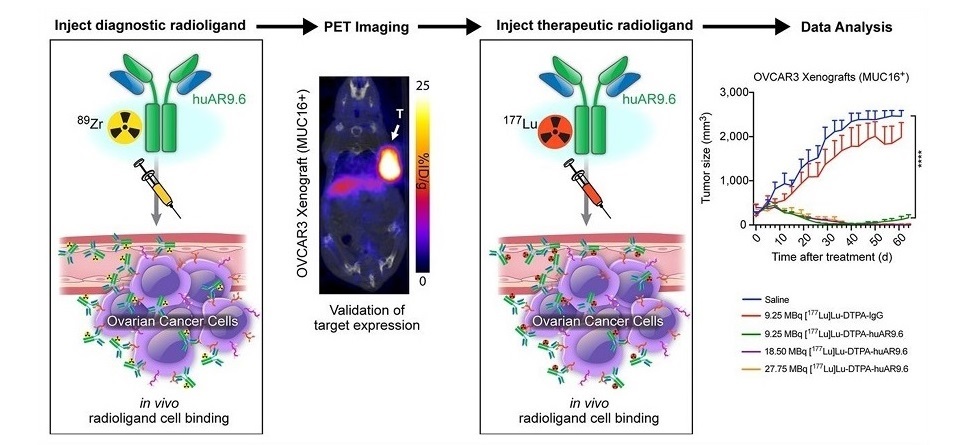Enhanced PET Imaging Radiotracers Designed for Better Tracking of Disease
By MedImaging International staff writers
Posted on 09 Jun 2014
Scientists have developed a direct approach for making single enantiomer positron emission tomography (PET) tracers.Posted on 09 Jun 2014
Small molecules containing a radioactive isotope of fluorine called 18F radiotracers are used to detect and track specific diseases in patients. When injected into the body, these molecules collect in specific targets, such as tumors, and can be visualized by their radioactive tag on a PET imaging scan. The 18F tags rapidly decay, therefore, no radioactivity remains after approximately one day.
But there are only a few strategies available for making 18F radiotracers. Furthermore, existing techniques tend to require harsh conditions that jumble the placement of a radiotracer’s more delicate chemical bonds. Researchers at Princeton University (Princeton, NJ, USA) reported that they now have a way to produce 18F radiotracers that avoids that problem. “It’s the first method to do enantio-selective carbon-18F bond formation,” said lead investigator Dr. Abigail Doyle, a Princeton associate professor of chemistry.
Radiotracers up to now have mostly been evaluated as mixtures of enantiomers. Enantiomers are molecules that are totally identical in composition but the arrangement of atoms at the chiral center are mirror images. A chiral center is an atom, typically carbon, which is connected to four different groups. “We know in biology, small molecule interactions with enzymes often depend on the 3D [three-dimensional] properties of the molecule. Being able to prepare the enantiomers of a given chiral tracer, in order to optimize which tracer has the best binding and imaging properties could be really useful,” Dr. Doyle said.
The researchers developed a cobalt fluoride catalyst—[18F](salen)CoF—to install the radioactive fluoride through the ring-opening reaction of epoxides. Their approach demonstrated excellent enantioselectivity for 11 substrates, five of which are known pre-clinical PET tracers. With this new method, researchers can now assess single enantiomers of existing or new PET radiotracers and evaluate if these compounds offer any benefits over the enantiomeric combinations. Eventually, the goal is to use this chemistry to identify a completely new PET radiotracer for imaging.
Currently, there are only four US Food and Drug Administration (FDA)-approved 18F radiotracers. One of the major limitations to discovering PET tracers is the fact that the only commercially available source of 18F is nucleophilic fluoride. Existing 18F sources are very basic, and during the process of making the 18F radiotracer, can cause the elimination of alcohol and amine groups and rearrange the groups around a chiral center in a process called racemization. Under Dr. Doyle’s less basic reaction conditions, even alcohols and secondary amines are tolerated and no racemization is seen.
“Forming carbon-fluorine bonds by nucleophilic fluoride is challenging. One typically needs to use high temperatures or else the reactions are too slow to permit radioisotope incorporation,” Dr. Doyle commented. “Whereas most reactions require temperatures greater than 100° Celsius, our reaction can be run at 50° Celsius.”
Small amounts of radioactivity were sufficient to develop the reaction at first but to perform imaging studies, larger amounts of radioactivity are necessary. “When you go to higher activity, that’s when you do automated chemistry in a hot cell, which is basically a block of lead so you get no exposure,” Dr. Doyle said.
To be efficient in an industrial environment, the chemistry needs to be converted from the laboratory to an automated hot cell. The researchers were given access to an automated hot cell nearby at Merck’s West Point (PA, USA) site. The whole process of radiolabeling takes about 30 to 45 minutes when it is automated. The set-up includes a robotic arm that delivers solutions to designated vials, a high-performance liquid chromatography (HPLC) system and a rotary evaporator, which are devices for the analysis and purification of the radiotracers.
“The catalyst is very robust and the fact that we can translate the reaction directly to the hot cell bodes very well for non-experts to be able to run these sorts of reactions,” Dr. Doyle concluded. “We demonstrated that the radioactivity is high enough that we could actually use it for imaging. That’s an exciting next step.”
Related Links:
Princeton University














